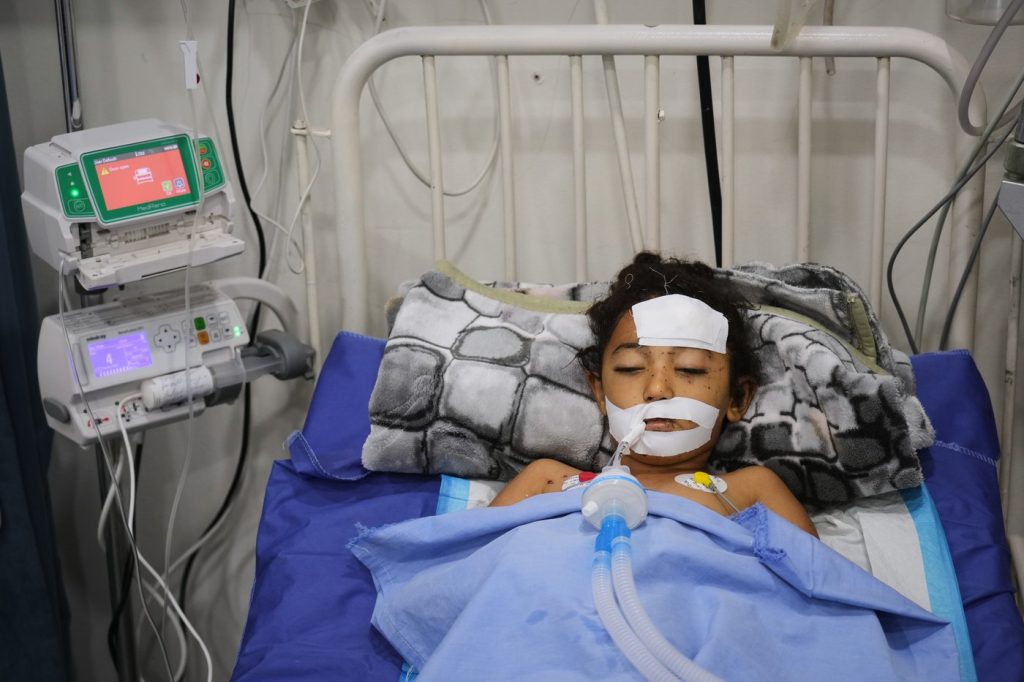GAZA CITY, Gaza Strip (AP) — The Shorbasi family faced a traumatic moment during the ongoing ceasefire in Gaza City when their 6-year-old twins, Yahya and Nabila, suffered life-threatening injuries from unexploded ordnance. While playing outside their severely damaged home, the children discovered a round object that detonated upon contact, leading to immediate chaos as their grandfather, Tawfiq Shorbasi, rushed them to Shifa hospital.
Tawfiq described the explosive as “like a toy,” highlighting the dangers that linger even during a ceasefire that commenced on October 10. Many Palestinians have returned to the remnants of their homes to salvage belongings or search through rubble for bodies that were unreachable during the conflict. He expressed grief for the irreversible impact on his grandchildren's lives, stating, “Their lives have been ruined forever.”
After receiving emergency treatment, Yahya was admitted to the hospital with his right arm and leg bandaged, while Nabila, who was treated at Patient’s Friends hospital, bore a bandaged forehead. Both children exhibited numerous shrapnel wounds. A British emergency physician, Dr. Harriet, reported that they sustained severe injuries, including the loss of a hand and a hole in the bowel, raising concerns about their recovery amidst Gaza's critical shortage of medical supplies.
The health risks from unexploded ordnance are escalating as more residents, including children, venture into dangerous areas. In addition to the twins’ injuries, two other children named Yazan and Jude Nour were wounded the previous Thursday while examining their own home, as noted by Shifa hospital staff. According to Gaza’s Health Ministry, five children have been reported injured by unexploded ordnance in just the past week, underlining the persistent threat despite the ceasefire.
Dr. Harriet emphasized the ongoing peril, stating, “We’re talking about a ceasefire, but the killing hasn’t stopped.” The death toll in the ongoing war has reached over 68,500 Palestinians, according to Gaza's Health Ministry, which tracks casualties without distinguishing between civilians and combatants. This statistic is generally seen as reliable by U.N. agencies, although Israel has disputed these figures without providing its own casualty count.
Luke Irving, head of the U.N. Mine Action Service (UNMAS) in the Palestinian territories, indicated that the risk from explosive remnants of war is exceedingly high, particularly as displaced Palestinians and aid workers return to previously evacuated areas in Gaza. Since the war's onset, UNMAS has documented at least 52 fatalities and 267 injuries attributable to unexploded ordnance. Furthermore, they have reported discovering 560 ordnance items during the current ceasefire, with many more potentially buried under the debris from two years of intense conflict.
Irving highlighted the magnitude of the destruction, estimating that up to 60 million tons of debris now clutter Gaza, complicating recovery efforts. In response to the urgent need for demining expertise, additional international specialists are slated to join ongoing efforts to remove these hazards. “As expected, we’re now finding more items because we’re getting out more; the teams have more access,” Irving noted, underscoring the necessity for continued vigilance and support in identifying and neutralizing unexploded ordnance.
___










